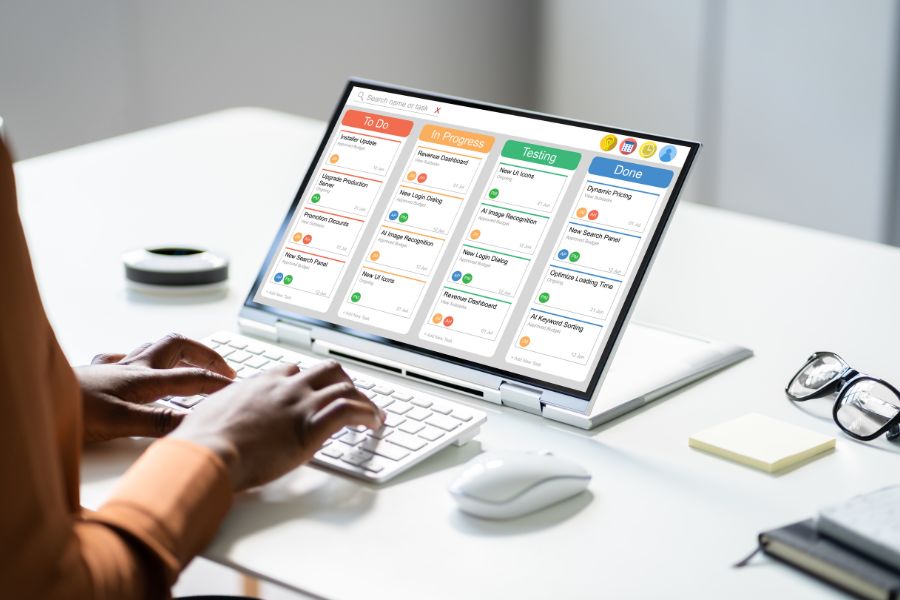Choosing the right digital customer experience software can revolutionize your business, but understanding the pricing is crucial. This guide breaks down the costs of top solutions, helping you make informed decisions without breaking the bank. Explore detailed comparisons and insights in this article to find the perfect fit for your budget and customer engagement goals.
Key Factors Influencing Pricing of Digital Customer Experience Software
IBM reports that awareness of new shopping technologies has surpassed 90%. As a result, more than 70% of respondents are either using or interested in trying visual search, and 50% are keen on VR smart tools.

This underscores the growing importance for businesses to invest in digital customer experience software to enhance their operations, particularly focusing on pricing and other aspects.
Below are the key factors influencing the pricing of digital customer experience software that you should be aware of.
Features and Functionalities
The range and depth of features and functionalities are primary determinants of the pricing for digital customer experience software.
- Advanced Capabilities: Tools offering AI-driven analytics, personalized customer journeys, multi-channel support, and real-time interaction tracking tend to be more expensive.
- Comprehensive Reporting and Automation: Solutions that provide extensive reporting, automation, and customization options typically come at a premium due to their ability to deliver more detailed insights and streamlined operations.
- Scalability: The ability to scale with your business needs, from small teams to large enterprises, can also affect the price. More scalable solutions often have tiered pricing models to accommodate different levels of usage.
User and Usage Metrics
The number of users and the extent of software usage are significant factors in pricing.
- Subscription Models: Many digital CX software solutions operate on a subscription model that scales with the number of users or the volume of interactions.
- Active Users and Sessions: Costs can rise for larger organizations with more extensive usage patterns. Some vendors charge based on the number of active users, sessions, or specific usage metrics like API calls or data processing volume.
- Usage Tiers: Some platforms offer tiered pricing based on usage levels, allowing businesses to only pay for what they need, but costs can increase as usage grows.
Deployment and Hosting
The choice between cloud-based, on-premises, or hybrid deployment models affects the pricing structure.
- Cloud-based Solutions: These often offer flexible, subscription-based pricing with lower upfront costs but recurring fees. They are typically easier to scale and update.
- On-premises Deployments: These require a substantial initial investment in licensing, hardware, and maintenance, with additional costs for updates and support. They may be preferred by businesses needing greater control over their data.
- Hybrid Solutions: Combining elements of both cloud and on-premises models, hybrid solutions offer a balance but can have complex pricing based on specific requirements.
Integration Capabilities
The ability to integrate with other systems and platforms, such as CRM, ERP, marketing automation, and analytics tools, can influence the price.
- Extensive Integration: Software that offers extensive integration capabilities with CRM, ERP, marketing automation, and analytics tools may cost more due to the added value of seamless data exchange and enhanced functionality.
- Custom Integrations and API Access: Custom integration solutions and API access can increase costs, especially if complex integrations are necessary to meet specific business needs.
- Interoperability: High interoperability with existing systems can reduce operational complexity and enhance the overall value, justifying higher prices.
Vendor Reputation and Support
The reputation of the vendor and the level of support they provide are crucial in pricing decisions.
- Established Vendors: Vendors with a track record of reliability, security, and innovation often command higher prices due to their proven performance and trustworthiness.
- Support Services: The quality and extent of support services, including onboarding, training, 24/7 customer service, and dedicated account management, impact pricing.
- Premium Support Packages: Faster response times and comprehensive support packages often come at an additional cost, reflecting the value of ensuring smooth operation and rapid issue resolution.
- Service Level Agreements (SLAs): The terms of SLAs, including guaranteed uptime and support response times, can also influence pricing.
By considering these factors, businesses can better understand the pricing landscape for digital customer experience software and make informed decisions that align with their needs and budget constraints.
Pricing Models
There are 5 pricing models used by digital customer experience software providers. Each model will fit a different type of business with a distinctive financial statuses, so always check the pricing model carefully for the optimal option.
Subscription-Based Pricing
Subscription-based pricing is the most common model for digital customer experience (CX) software.
- Recurring Fees: Customers pay a recurring fee—typically monthly or annually—to use the software.
- Included Services: The subscription fee often includes access to updates, support, and maintenance, ensuring that the software remains up-to-date and fully supported.
- Flexibility: This model offers flexibility, allowing organizations to scale their usage up or down based on their needs.
- Predictable Budgeting: Costs are spread out over time, making budgeting more predictable and manageable for businesses.
Usage-Based Pricing
Usage-based pricing, also known as pay-as-you-go or consumption-based pricing, charges customers based on their actual usage of the software.
- Variable Costs: Charges are based on metrics such as the number of interactions, API calls, data volume processed, or the number of active users.
- Alignment with Value: This model is beneficial for organizations with fluctuating or unpredictable usage patterns, as it aligns costs directly with the value derived from the software.
- Budget Challenges: While it can be cost-effective during periods of low usage, it can lead to variable expenses that are harder to predict and budget for.
Perpetual Licensing
Perpetual licensing involves a one-time payment for a software license, granting the customer indefinite use of the software.
- Upfront Costs: This model requires a substantial initial investment, typically associated with on-premises deployments.
- Additional Fees: Customers often need to pay additional fees for maintenance, updates, and support to keep the software current and functional.
- Long-term Cost-effectiveness: Although the upfront cost is high, perpetual licensing can be cost-effective over the long term for organizations that prefer a capital expenditure (CapEx) approach over an operating expenditure (OpEx) model.
- Less Common: This model is less common in the digital CX space, which increasingly favors cloud-based solutions.
Freemium and Free Trials
Freemium and free trial models provide a way for customers to experience the software before committing to a purchase.
- Freemium Model: Basic features of the software are available for free, while advanced features and functionalities are offered through paid tiers. This allows businesses to start using the software without any initial investment.
- Free Trials: Full access to the software is granted for a limited period, allowing potential customers to thoroughly evaluate its suitability for their needs.
- Lower Barrier to Entry: These models lower the barrier to entry, enabling organizations to test the software’s value and functionality without an upfront financial commitment.
- Conversion to Paid Plans: Both models aim to convert users to paid plans by demonstrating the software’s value during the free usage period.
Hybrid Pricing Models
Some vendors offer hybrid pricing models, combining elements of the above approaches to provide more tailored solutions.
- Custom Plans: These plans might include a base subscription fee with additional usage-based charges, offering flexibility while maintaining some level of cost predictability.
- Bundled Services: Packages that bundle various services and features can provide better value for businesses with specific needs, often at a discounted rate compared to purchasing services separately.
Hidden Costs and Considerations
- Implementation and Setup Fees
While the primary cost of the software might seem straightforward, implementation and setup fees can add significant expenses. These costs cover the initial deployment, configuration, and customization of the software to fit the organization’s specific needs.
Implementation fees can also include training for staff, which is crucial for ensuring smooth adoption and effective use of the software. Depending on the complexity of the setup, these costs can be substantial.
- Data Migration Costs
Migrating existing data to a new digital CX platform can be both time-consuming and costly. Data migration involves transferring customer data, interaction histories, and other relevant information from legacy systems to the new software.
This process requires careful planning and execution to avoid data loss or corruption. Costs can escalate if data needs to be cleaned or reformatted to be compatible with the new system, or if there is a need for temporary storage solutions during the migration.
- Custom Development Charges
Off-the-shelf digital CX software may not always meet an organization’s specific requirements. Custom development can be necessary to tailor the software to unique business processes, integrate with other systems, or add specialized features.
These customizations can incur significant additional costs, both in terms of initial development and ongoing support. The need for bespoke solutions can also lead to longer implementation times and more complex maintenance.
- Ongoing Maintenance and Upgrades
The cost of maintaining and upgrading digital CX software is often overlooked. Regular maintenance is essential to ensure the software runs smoothly and securely. This includes applying patches, updates, and security enhancements. Additionally, as technology evolves, upgrades may be necessary to add new features or improve performance. These activities typically require dedicated IT resources, either in-house or from the vendor, and can result in recurring expenses.
- Downtime and Opportunity Costs
Downtime during implementation, upgrades, or due to technical issues can lead to lost productivity and potential revenue losses. Transitioning to a new system might temporarily disrupt business operations, impacting customer service and satisfaction.
Additionally, the time and effort spent managing and troubleshooting the software could be used on other strategic initiatives. While these opportunity costs are not always directly quantifiable, they can significantly affect an organization’s overall performance and efficiency.
Understanding these hidden costs and considerations is crucial for organizations to fully grasp the total cost of ownership of digital customer experience software. By anticipating and planning for these expenses, businesses can make more informed decisions and ensure they allocate sufficient resources for a successful implementation and ongoing operation.
How ConnectPOS Supports You in Elevating the Digital Customer Experience
Make every customer interaction matter with ConnectPOS
ConnectPOS leverages next-gen technology to ensure scalable efficiency across all your operations. Whether managing a single location or multiple sites, this all-in-one CX solution guarantees smooth operations and effective multi-location management.
By deepening customer connections through a system that learns preferences and profiles, ConnectPOS guides decisions for unparalleled service. Moreover, it allows for tailored customization with industry-specific integrations and API flexibility, ensuring a perfect fit for your unique enterprise needs.
Optimize for customer-centric success
ConnectPOS enhances the overall customer experience with its fast and reliable checkout process, ensuring efficient transactions that minimize wait times. Its advanced inventory tracking capabilities predict stock needs and automate reordering, ensuring product availability without delay.
Moreover, comprehensive reporting tools provide real-time analytics and insights into customer behavior and sales performance, enabling data-driven decisions that optimize your business for customer-centric success.
Engage for lasting customer relationships
With ConnectPOS, you can build comprehensive customer profiles to track and analyze shopping habits, enabling personalized service that anticipates customer needs and preferences. The system supports tailored reward and loyalty programs based on individual customer behavior, incentivizing repeat business and fostering loyalty.
Furthermore, omnichannel support ensures a seamless experience across all platforms, maintaining consistency and convenience for your customers, thereby enhancing their overall satisfaction.
Design your ideal customer experience
ConnectPOS offers a Progressive Web App (PWA) that delivers a smooth, app-like shopping experience on any device, designed for ultimate customer convenience. Intelligent product classification enhances product discovery, improving search efficiency and customer satisfaction.
Not only that, the system optimizes order fulfillment with transparent, real-time shipping tracking, ensuring assured and informed customer purchases, whether dealing with backorders or preorders.
Achieve service excellence through our dynamic integration partnerships
ConnectPOS’s API-first framework integrates effortlessly with essential customer service solutions, including self-checkout and membership systems, as well as premier CRMs and business platforms. This centralizes insights and enhances customer excellence by providing a cohesive and streamlined experience.
Through these dynamic integration partnerships, ConnectPOS ensures that your business can achieve service excellence and a unified customer experience.
FAQs About Digital Customer Experience Software
- Do digital customer experience software vendors offer free trials or demos?
Yes, many vendors offer free trials (7-30 days) or guided demos to let potential customers evaluate the software before purchasing.
- How does the number of users affect the pricing of digital customer experience software?
Pricing typically increases with the number of users. Vendors often use tiered pricing models, with volume discounts for larger user bases or charges based on active users.
- What additional features might incur extra costs in digital customer experience software?
Additional features that may incur extra costs include advanced analytics, AI and machine learning tools, custom integrations, enhanced security, software customization, and premium support services.
- Is there a difference in pricing between cloud-based and on-premise digital customer experience software?
Yes, cloud-based software generally follows a subscription model with lower upfront costs but ongoing fees. In contrast, on-premise software requires a larger initial investment with additional costs for maintenance and updates, potentially offering long-term savings.
Conclusion
Investing in digital customer experience software is essential for businesses looking to stay competitive in today’s market. Organizations can choose the best solution that fits their needs and budget by understanding the pricing models, key cost factors, and potential hidden expenses. This guide aims to simplify the decision-making process, ensuring businesses can enhance their customer experience effectively and efficiently.
If you want to know more about the digital customer experience solution that ConnectPOS offers or its other capabilities, please contact us.
ConnectPOS is a all-in-one point of sale solution tailored to meet your eCommerce POS needs, streamline business operations, boost sales, and enhance customer experience in diverse industries. We offer custom POS with features, pricing, and plans to suit your unique business requirements.




